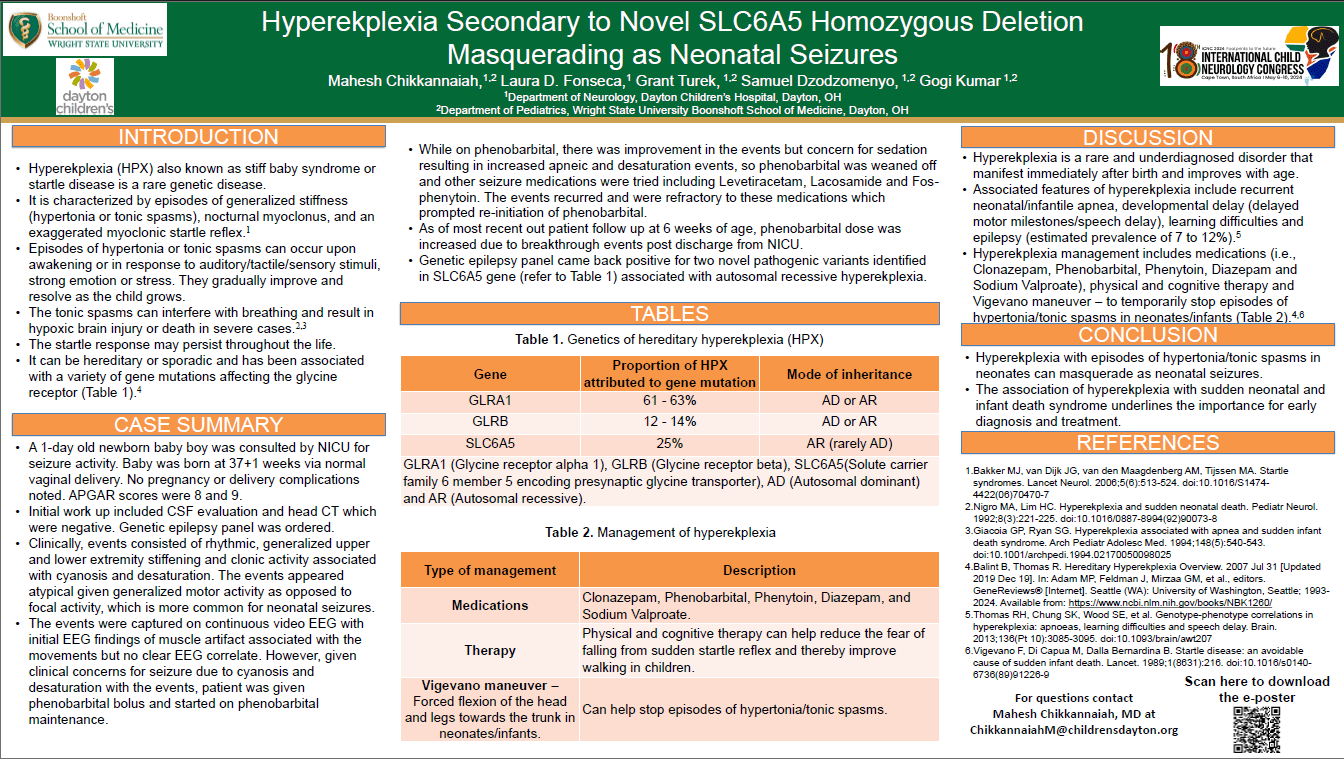Hyperekplexia Secondary To Novel SLC6A5 Homozygous Deletion Masquerading As Neonatal Seizures.
Hyperekplexia also known as stiff baby syndrome or startle disease is a rare genetic disease. It is characterized by a triad of generalized stiffness, nocturnal myoclonus, and an exaggerated myoclonic startle reflex which are often apparent at birth. Episodes of hypertonia or tonic spasms occur upon awakening or with auditory or tactile stimuli. The tonic spasms in older infants can result in sudden fall in response to surprise, sensory stimuli, strong emotion, or stress. As the child grows, the tonic spasms gradually improve and resolve, but startle response may persist throughout the life. The tonic spasms can interfere with breathing and result in hypoxic brain injury in severe cases. The tonic spasms may be terminable by manual flexion of the neck or hips.
Hyperekplexia can be hereditary or sporadic and has been associated with a variety of gene mutations affecting the glycine receptor. The most common hereditary form is caused by variants in the glycine receptor alpha 1 (GLRA1) gene on chromosome 5, with both autosomal dominant and recessive forms described. Other genes involved include glycine receptor beta (GLRB), ATPase family AAA domain containing 1 (ATAD1), and solute carrier family 6 member 5 (SLC6A5), which encodes a presynaptic glycine transporter. The SLC6A5 variants are predominately associated with autosomal recessive hyperekplexia and symptoms include life-threatening neonatal apnea and breath-holding spells. Herein, we described a neonate presenting with severe generalized tonic spasms associated with respiratory distress, desaturation and peri-oral cyanosis mimicking neonatal seizures secondary to hyperekplexia with novel SLC6A5 homozygous deletion.
Mahesh Chikkannaiah
Dayton Children's Hospital
United States
Laura Fonseca
Dayton Children's Hospital
United States
Grant Turek
Dayton Children's Hospital/ Wright State University
United States
Samuel Dzodzomenyo
Dayton Children's Hospital/ Wright State University
United States
Gogi Kumar
Dayton Children's Hospital/ Wright State University
United States
